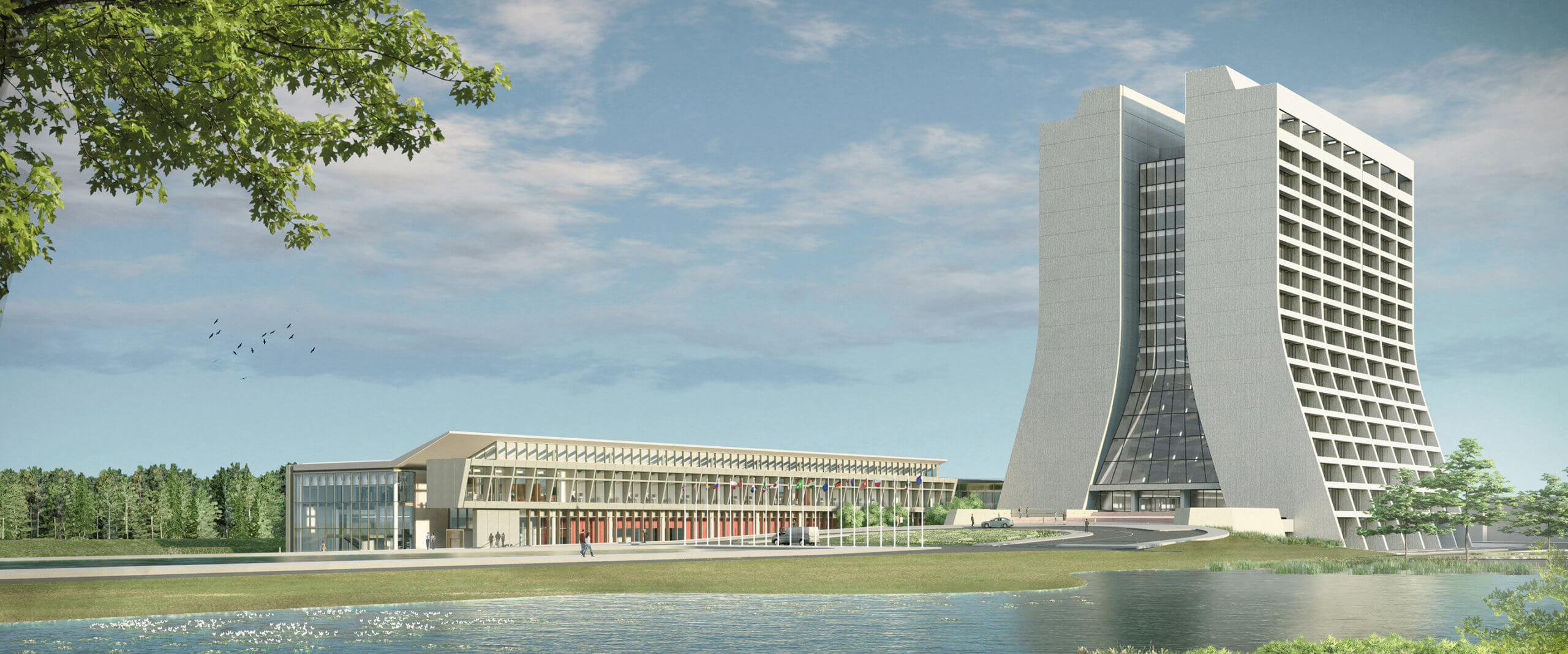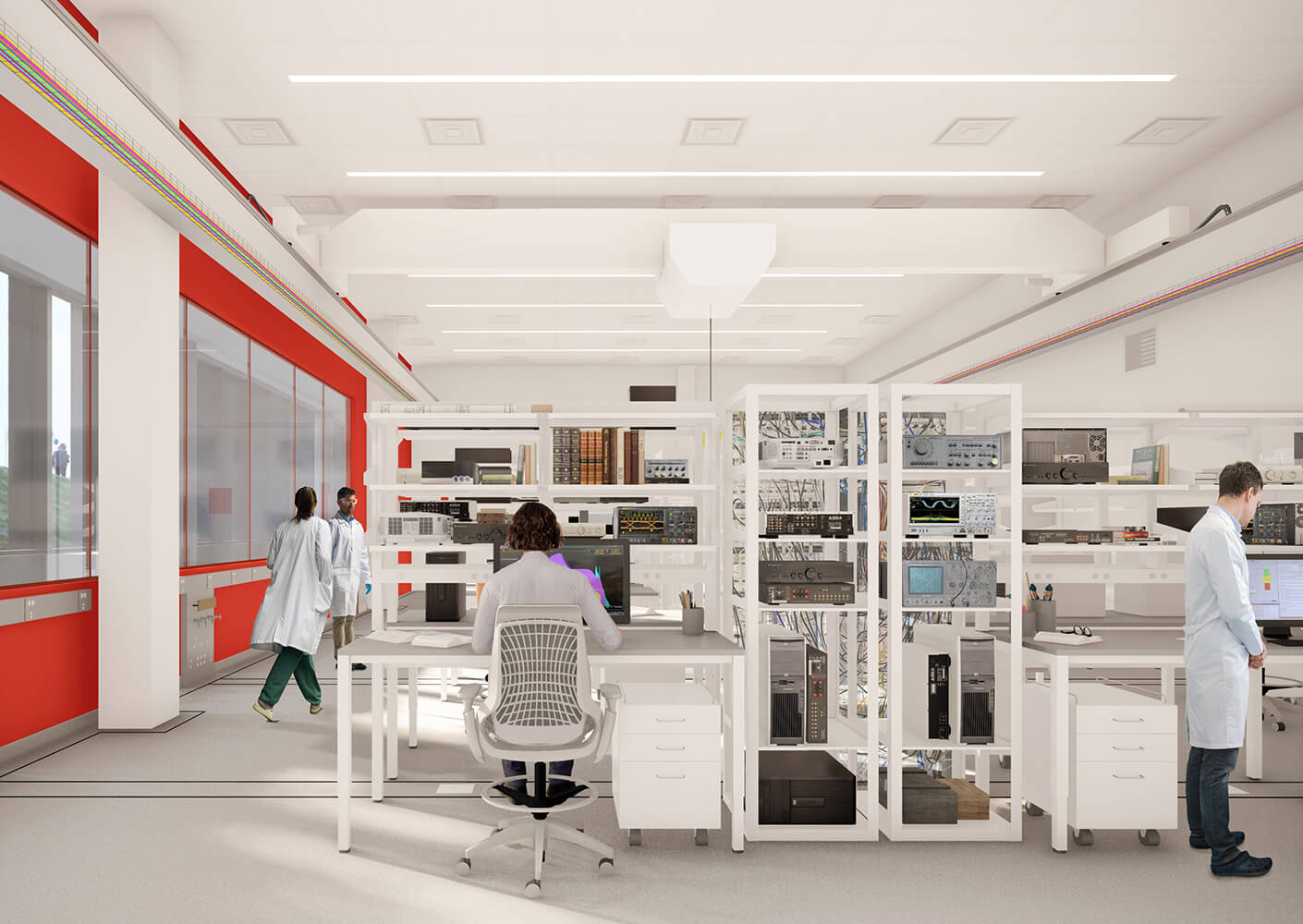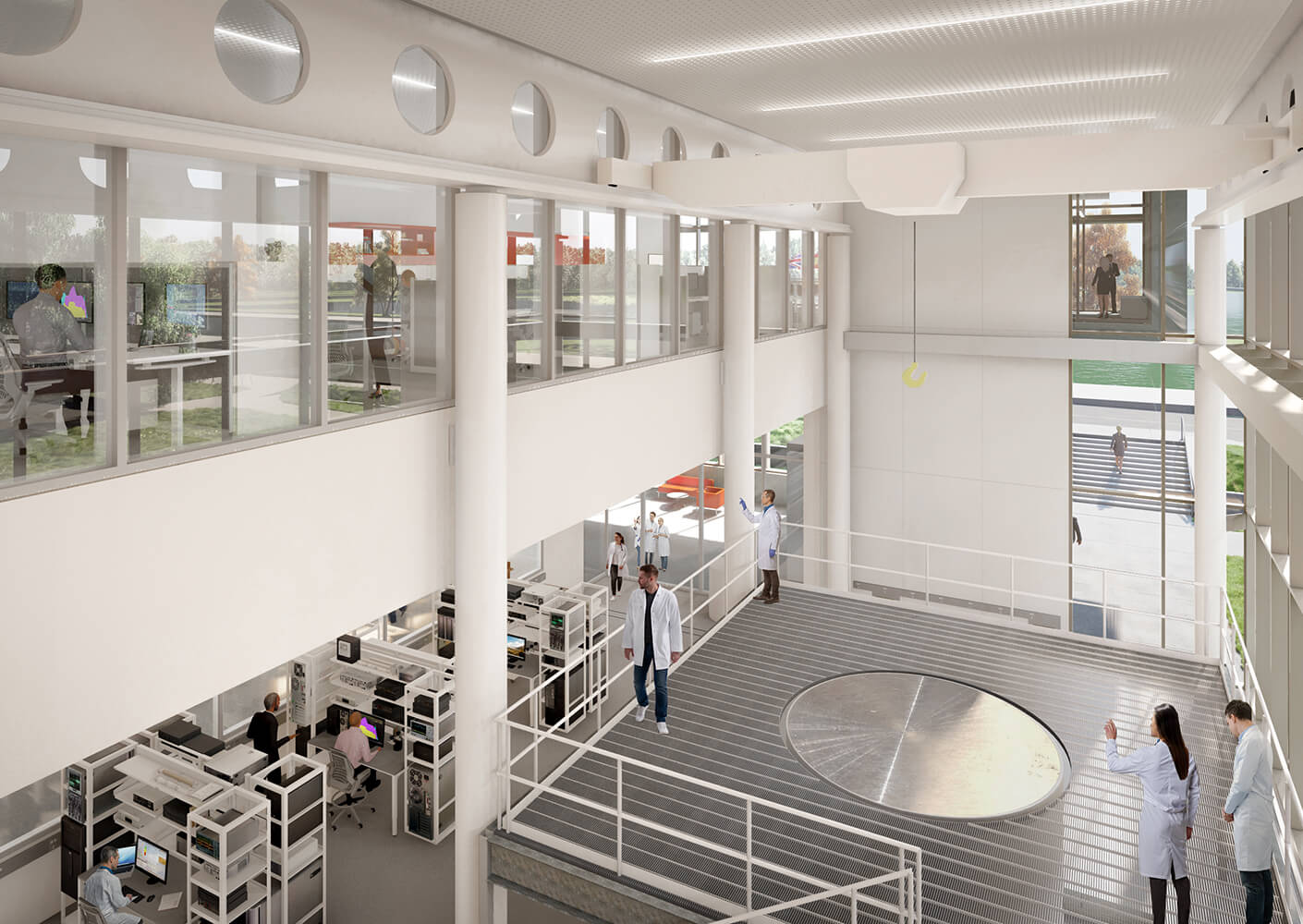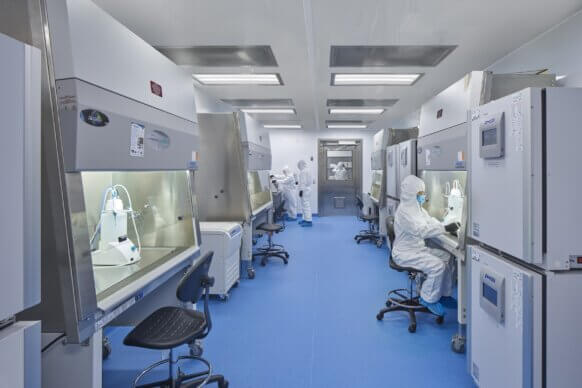In contrast to life sciences laboratories—where the range of activities and needs can be reasonably predicted, and the type of flexibility can be anticipated—project-based physics and engineering laboratory environments must speculate based on the trajectory of the science. In order to deliver a facility that will meet the needs of today’s known programs and provide future flexibility, we must first dive into the drivers of the science and engineering.
At IERC, this process was based on programming around the “scientific use cases,” of project types that were planned on a 20-year horizon. The IERC is the first building at Fermilab that intentionally brings together multiple departments and capabilities to foster a cross-departmental and cross-divisional collaboration platform. From this perspective, a broad look at current needs and future potential created a strong set of guiding principles for the design of this unique facility.
Rather than embracing the idea of flexibility—attempting to anticipate every future need and incorporating features that meet these speculative needs—the IERC takes a markedly different approach in providing an adaptable framework that removes obstacles to future augmentation as new research and development needs emerge. In other words, the IERC design approach leaves functional placeholders and space to accommodate future adaptation to needs when they can be clearly defined, rather than guessing about future uses.
During the course of reviewing over 400 use-cases and determining the types of spatial support that projects might need—such as clean-class requirements, assembly capabilities, fabrication, equipment, and services—the design team began to analyze the data to identify commonalities and distinct differences in capabilities. Based on the spectrum of use-case potential needs, the team developed a modular approach to space allocation and building systems. The outcome was a program that included clean-class fabrication space or project labs, core instrumentation and tool laboratories, and function-specific electronic fabrication laboratories as well as adaptable dry-bench lab space for small electronic design and fabrication.




